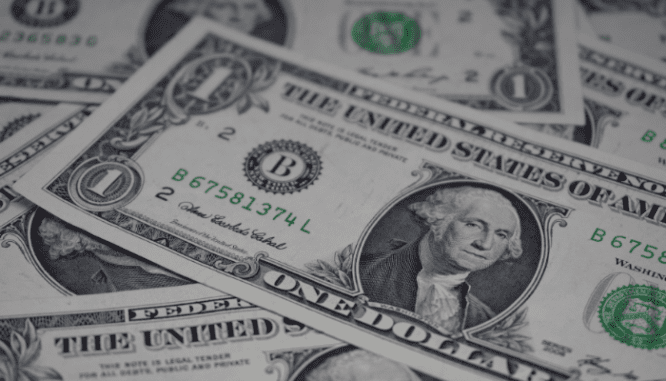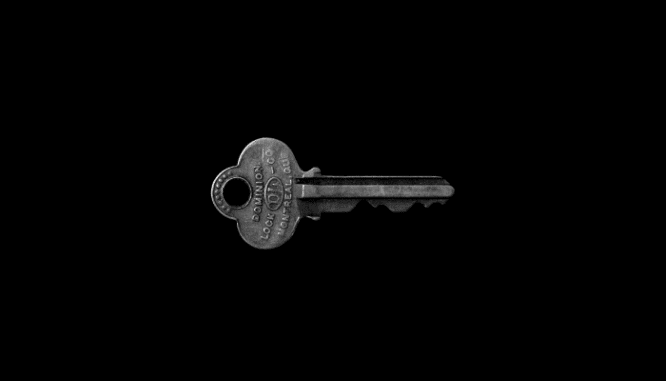How Does a Mortgage Work? A Simplified Guide for First-Time Buyers
- Published on
- 28 min read
-
 Chelsea Levinson Contributing AuthorClose
Chelsea Levinson Contributing AuthorClose Chelsea Levinson Contributing Author
Chelsea Levinson Contributing AuthorChelsea Levinson, JD, is an award-winning content creator and multimedia storyteller with more than a decade of experience. She has created content for some of the world’s most recognizable brands and media companies, including Bank of America, Vox, Comcast, AOL, State Farm Insurance, PBS, Delta Air Lines, Huffington Post, H&R Block and more. She has expertise in mortgage, real estate, personal finance, law and policy.
The time has come: You’re ready to dip your toes into homeownership, and you’re vaguely aware you might need a mortgage to get the job done. The only problem? You don’t know the first thing about mortgages — how they work, how much they cost, or how to get one.
You’re not alone — the mortgage stress is real. In fact, a recent TD Bank survey of would-be first-time buyers found that 75% are overwhelmed by the homebuying process.
Another survey by Homes.com found that 40% of Americans say buying a home is the most stressful event in modern life.
The inertia ends here! We spoke to Richie Helali, Mortgage Sales Leader at HomeLight, to walk us through the basics on getting a mortgage. Here’s what buyers need to know.

What is a mortgage?
A mortgage is a loan you get to buy a house. You borrow the money from a mortgage lender to cover the cost of the home purchase now, and then pay off the loan — with interest — over a set period of years, normally 15 or 30 years.
What makes a mortgage different from, say, a personal loan, is that it’s secured by the property. That means if you stop making mortgage payments or otherwise violate your mortgage agreement, the lender can repossess the property from you through the foreclosure process.
The upside of getting a mortgage is that it makes homeownership a lot more accessible.
“It allows you to go buy a house without having all of the money in the world to just buy in cash,” shares Helali.
The median U.S. home price was $346,800 as of December 2020. Most Americans don’t have several hundred thousands of dollars lying around, so borrowing is the only option. Plus, in today’s low-interest-rate environment, mortgages are cheaper than ever.
The downside of using a mortgage is that the process can be stressful and overwhelming, and it often costs a good chunk of change upfront. Plus, you’ll have to qualify for a mortgage first, which can be challenging if your credit, income, and savings aren’t where they need to be.
What if you do have the cash to buy a house? Cash can definitely make your offer a lot more compelling to a seller, which is a huge plus in a competitive market. But even if you have the cash, it might make sense to use a mortgage (you can always buy in cash and refinance later) so you’re not tying up all your money in one investment.

How do you apply for a mortgage?
1. Make sure you’re qualified for one in the first place
First things first: Before you apply for a mortgage, you probably want to make sure you’re qualified to get one.
“The mortgage amount that somebody is qualified for depends on what their income looks like, what their credit score looks like, as well as the funds they have available to make a down payment,” explains Helali.
Lenders can’t just hand out mortgages to anybody. Your credit score, income, and savings have to hit the right marks. Here’s what you need to know.
Income and debt
Lenders want to make sure you can afford your mortgage payment each month, so they look at your monthly income relative to your debts. Your debt-to-income ratio, or DTI, is one of the main parameters used to determine how much mortgage you can get approved for.
You can figure out your DTI by adding up all of your minimum monthly debt payments (including your car loan, student loan, credit card minimum payment, child support, alimony, personal loans, and so on) and then dividing it by your gross monthly income (your total income before taxes and deductions).
If your monthly payments add up to $600 each month, and your income is $3,000, then your DTI is:
$600 / $3,000 = .20, or 20% DTI
Lenders like to see a DTI of 45% or lower — including your mortgage payment — but can often go up to around 50% DTI for certain qualified buyers.
For a quick rundown on how much home you can afford, check out our simple calculator.
Credit score
Another big number your lender is going to look at when deciding whether you give you a mortgage? Your credit score.
Credit scores measure how well you manage and pay off debt, and that’s a big deal for a lender, who’s taking on considerable risk to loan you a large sum of money. They want to make sure you’ll pay it back on time and in full month after month.
A stronger credit score will get you a better rate on your mortgage — saving you thousands of dollars over the life of the loan — whereas a lower credit score will mean a higher rate, or it may put you at risk of not qualifying at all.
So, what credit score do you need to buy a home? It depends!
Here’s a quick breakdown by loan type:
- Conventional loan: 620 minimum, but many lenders require higher scores
- FHA loan: 580 minimum, but can go as low as 500 if you put down 10% or more
- USDA loan: 640 minimum
- VA loan: 620 minimum, but some lenders may go a bit lower
If your FICO score is 740 or above, you’ll qualify for the best rates a lender has to offer. As a rule, the closer you are to the minimum credit score for a loan, the higher the rate you’ll be offered.
Savings
The last big piece of qualifying for a mortgage is having savings you can use for your down payment, closing costs, and as backup cash reserves to show your lender that buying a home isn’t going to completely clean you out.
While there are loans that require less money down upfront (more on that soon), you’ll need to have at least some savings to buy a home. How much you need to have saved depends on the specifics of your purchase.
For example, if you have a lower credit score, you may need to put more money down to offset the lender’s risk. If you have excellent credit, then you may be able to put less down.
2. Get preapproved
Your DTI, credit, and savings are in great shape, and you’re feeling confident you’re ready for the next step. It’s time to get preapproved — here’s how to do it.
“The first step to get a mortgage is to talk to a loan officer and get approved,” Helali says.
“Once a lender has an idea of your income, credit score, and available funds, they can come back and give you an idea of what you’re actually going to be approved for.”
Prequalification vs. preapproval
If you’ve spent any amount of time clicking around on lender websites, you’ve probably seen the terms “prequalification” and “preapproval” thrown around. But what do they mean, and what’s the difference?
A prequalification is typically a quick estimate of how much home you can afford, based on self-reported information you provide the lender. It often doesn’t hold much weight with sellers when it comes to making an offer because it carries a lot of uncertainty, but it’s a good noncommittal first step to gather information and explore your options.
A preapproval, on the other hand, usually requires a more thorough vetting of your finances, and the lender will likely run your credit. You may need to provide tax returns, bank statements, and other pieces of financial documentation to get preapproved with some lenders, others may only look at a credit report and a pay stub. How much a preapproval is verified can vary greatly from lender to lender, but the more they do upfront, the stronger your offer will be.
While this is a more cumbersome process than getting a prequalification, a preapproval is an important step if you want to buy a home. Here’s why:
- It gives you a much better idea of how much home you can afford so you don’t waste time looking at houses that are out of your price range.
- It gives you more certainty that your loan application will be approved once you do get an offer accepted.
- You can submit your preapproval with your offer to make your bid stronger. In fact, including a preapproval with your offer is all but necessary in a competitive seller’s market.
Understand, though, that preapprovals do expire — they’re often good for anywhere between 30 and 180 days, depending on your circumstances and the lender — so don’t take this step until you’re truly ready to start home shopping.
A note on approval amounts
Another thing to keep in mind is that just because you’re approved for up to a certain amount doesn’t mean you have to spend all that money.
“Think of it as more like a credit card, where you have a credit limit,” Helali suggests. “Just because you have a $5,000 credit limit doesn’t mean you should go spend $5,000 on a credit card. With a mortgage, it’s the same thing.”
“You’ll have a maximum approval amount, so you’ll know what you can go up to if you absolutely need to. And you can use that number to shop around for homes in your price range with your agent,” he adds.
3. Find a home and make your offer
Before you can officially apply for a mortgage, you need to have an accepted offer on a home.
When you find your dream house with your agent, you’ll make a bid and include your preapproval to show you can afford said home, and to help assure the seller that your financing is likely to clear.
Include the right contingencies
You’ll probably want — or need — to include a few important contingencies in your offer. What are contingencies? They’re contractual stipulations that must be met before the home purchase can be completed. Contingencies protect buyers from common issues that can derail the deal.
Common contingencies include:
Financing contingency
Your financing must be approved and cleared otherwise you can back out of the deal without penalty. This contingency is generally a must if you’re using a mortgage.
Appraisal contingency
Your lender needs to order an appraisal on the home, and if the home is valued at less than what you offered, you can renegotiate or walk.
Because an appraisal is usually required by the lender, you’ll need to include this contingency in your offer.
Inspection contingency
After you go under contract on a home, you have a certain period of time to run inspections to learn more about the property’s condition. If anything major comes up, you can exit the deal.
Inspection contingencies are optional, but it’s not advisable to skip one. It’s one of the most important ways you can protect yourself if the home needs extensive — and unexpected — repairs.
Title contingency
This one comes along for the ride in almost any real estate deal. A title company will need to clear the home’s title and make sure no one else can make a claim on the property you’re buying.
The title contingency protects you if, say, there’s a surprise second mortgage on the property, a huge backlog of unpaid taxes, or a long lost heir who claims that the house actually belongs to them.
4. Apply for a mortgage
Once you’re under contract on a home, you can finally officially apply for a mortgage. If you haven’t done so already, be prepared to provide your lender all kinds of financial documentation proving your income and assets.
Here’s a quick list of most of the documents you need to get a home loan:
- Government-issued identification (driver’s license, passport, state ID)
- Two years of tax returns
- Two years of W2s or 1099s
- Proof of any other income such as social security, disability, retirement, tips, real estate income, etc.
- Pay stubs for the last 30 days
- Bank statements for the last 60 days
- Asset details on investments, stocks, properties
- Gift statements from family if you’re using them
Make sure to keep everything organized and on hand. The quicker you get all the requested documents into your lender, the quicker you’ll get that final approval and close on your new home.

How do down payments work?
In most home purchases, the lender doesn’t cover 100% of the price (unless you’re using a zero-down USDA or VA loan). You’ll likely need to contribute some money toward the purchase too. Enter the down payment.
Why do you need a down payment?
- Most loans require one.
- It gives you equity (i.e. a percentage of ownership that is not subject to a loan) in the home right away.
- It offsets the lender’s risk.
- It shows the seller (and lender!) you’re a serious buyer with skin in the game.
- The larger down payment you make, the lower your rate and monthly payments will be.
How much should you put down on a house?
Many would-be buyers shy away from homeownership because they believe the myth that you need to put 20% down on a home to get a mortgage. Not true! While putting down 20% will help you get a better rate and avoid mortgage insurance (we’ll get to that in a second), it’s not necessary.
In fact, the average homebuyer puts down just 12%, and for first-time buyers, it’s more like 6%. Repeat buyers put down a little more — an average of 16% — because they’re able to use equity in their current home to help make a down payment on the next one.
So how low can you go when it comes to a down payment?
“If you’re a first-time homebuyer, you can do as little as 3% down. If you’re not a first-time homebuyer, it’s typically going to be at least 5% down,” Helali explains.
Here’s how minimum down payments shake out for each loan type:
- Conventional loan: 5% minimum down (with some first-time buyers qualifying for as little as 3% down)
- FHA loan: 3.5% minimum down
- USDA loan: 0% down
- Note: Only available for eligible properties in rural locations
- VA loan: 0% down
- Note: Only available for qualifying active duty military, veterans, and spouses
As you can see, there are low down payment options available for every loan type.
Note that conventional and FHA loans are the most popular loan types, and the majority of buyers use one of these two options. So, while zero-down options are a thing, they’re only available to a select few buyers. If you can take advantage of these zero-down programs, they’ve got some of the best terms out there for buyers!
So that still leaves the question: How much should you ideally put down on a home? Unfortunately, there’s no hard-and-fast answer. It depends on a number of factors, including your savings, the competition level in your local real estate market, where mortgage rates are at, and how much work the home needs — just to name a few.
Talk to your real estate agent, lender, and a trusted financial advisor. They can help you make the right decision for your unique situation.
A word on mortgage insurance
There’s another major caveat to making a low down payment: mortgage insurance.
When you put down less than 20% on a conventional loan, your lender will require that you pay mortgage insurance (or MI) until you reach 20% equity in the property. This is known as private mortgage insurance (PMI) for conventional loans.
Mortgage insurance generally costs between 0.5% and 1% of the loan amount annually, spread out over your mortgage payments. This will make your mortgage payments more expensive, so make sure to budget for mortgage insurance when home shopping.
If you use a USDA or FHA loan, mortgage insurance is required for at least a certain period, regardless of your down payment amount. VA loans don’t require mortgage insurance at all, but they do require a VA funding fee.

What are mortgage rates?
Simply put, your mortgage rate is the rate of interest you’ll pay on your home loan.
Let’s say you borrow $200,000. That’s what’s called your principal. Your rate is the interest you pay the lender to finance the home over the loan term. Both are rolled into your mortgage payment each month.
So where does your rate come from? The lender sets it based on a bunch of factors, including:
- Your credit score, DTI, savings, down payment amount (the better these numbers look, the lower your mortgage rate)
- Your loan type and features
- The property type and location
- The Federal Reserve interest rate
- What’s happening with the secondary mortgage market (after the lender funds your mortgage, they usually turn around and sell that loan on the secondary market)
- The health of the mortgage and housing markets
- The economy as a whole (GDP, inflation, unemployment, job growth, the stock markets, etc.)
- The individual lender’s cost of doing business
As you can see, mortgage rates are complicated business. And they’re changing all the time — sometimes multiple times a day — based on these dynamic factors. To make matters even more confusing, each lender has their own individual pricing.
Your rate is a big deal when it comes to how much you’ll pay for your mortgage over time. A slight change could mean tens of thousands of dollars saved. That’s why it’s a good idea to compare lenders and shop around.
“It’s always best to reach out to more than one lender,” Helali advises. “I normally recommend reaching out to at least three to get an idea of what rates look like. That way you’ll know if you’re getting a great deal.”
According to a recent study, you could save up to 1% on your interest rate by shopping around. That would save you an average of $125 per month, or about $1,499 year — which adds up to a whopping $44,500 saved over the life of the loan.
Types of interest
There are two main types of loan interest: Fixed rate, and adjustable rate.
Fixed-rate mortgages
With a fixed-rate mortgage, you’ll pay the same rate over the life of the loan, and your mortgage payments remain the same (though your property taxes and insurance may go up in cost over time).
Fixed-rate interest is usually a bit higher than adjustable rate (at least initially), but it’s a good option if you plan to stay in the home a longer period of time, because the rate — and your payments — are more predictable over time.
Adjustable-rate loans
If you go with an adjustable rate, you’ll have an introductory period of several years where you pay a lower rate, “then after that initial set period, your rate will adjust periodically to meet market mortgage rates.
Obviously, this is a bit of a riskier option than a fixed-rate loan, especially if rates go up significantly after you take out the loan. But adjustable-rate loans can work out well if you don’t plan to stay in the house very long.
Your loan officer will walk you through your rate options and help you decide which one works best for you.
What are points?
What’s the deal with mortgage points? That’s when you pay the lender upfront to “buy down” your rate, meaning you basically prepay some of your interest.
Buying one discount point normally costs 1% of the loan amount, and reduces your rate by 0.25%. Typically, you can buy up to three points, to knock a total of 0.75% off your rate.
Are points worth it for you? That depends. How long do you plan to stay in the home? Points are a long game — it can take several years to break even on them, before you start realizing the savings (check out our handy chart for an example of how this can play out).
In a low-interest-rate environment, points are a bit less attractive for buyers. That money might be spent better elsewhere, like on home improvements, new furniture, and moving costs.
The Loan Estimate and Closing Disclosure
After you apply for your mortgage, the lender will send you a Loan Estimate outlining the estimated costs you’ll need to pay at closing. This should give you an idea of how much you’ll have to shell out at closing and what your monthly mortgage payments will look like.
Then three days before you close on the loan, your lender will give you a Closing Disclosure outlining the actual costs you’ll pay.
The Loan Estimate and Closing Disclosure include:
- Loan terms: The mortgage amount, interest rate, and monthly payments
- Payment schedule: Your payback schedule, plus an estimate of all the other costs that will be rolled into your monthly payment, like mortgage insurance, property taxes, and homeowner’s insurance
- Closing costs: These include one-time costs you pay at closing, like fees for the appraisal, escrow, title, prepaid taxes, and more
Note that while your Loan Estimate will probably not be 100% accurate, it shouldn’t drastically differ from the numbers on the Closing Disclosure. Make sure to compare these two documents carefully to look for discrepancies.

Government-backed loans and special programs for buyers
Government-backed loans
More than two-thirds of buyers use conventional loans, which are loans made by private banks or sold to GSEs like Fannie Mae or Freddie Mac. But there are also government-backed options available for certain buyers. Here’s what you need to know.
USDA loans
A USDA loan might be available if you want to purchase an eligible property in a rural location (in this case, “rural” includes roughly 97% of the country!).
These loans are geared toward low- and middle-income buyers with strong credit. Income limitations do apply.
The major upside to USDA loans? You can put zero down, and they have relatively low interest rates.
VA loans
VA loans are backed by the Veterans Administration, and they’re available to qualifying service members, veterans, and surviving spouses of those who have died in service.
These loans are extremely buyer-friendly. You can put zero down, and rates and fees are generally lower-than-average.
FHA loans
FHA loans are usually best for buyers who may not qualify for a conventional loan, but are ready to take the plunge into homeownership. They have lower credit score minimums, but to offset that risk, they come with higher fees and interest rates. So you’ll pay more for a FHA loan over time.
Still, sometimes getting into homeownership now and refinancing later is the right move.
Homebuyer programs
Plenty of programs are out there to make homeownership more accessible. Let’s walk through a few.
First-time buyers
There are a number of programs designed for first-time buyers. In the mortgage world, a “first-time buyer” is a bit of a misnomer, as it commonly includes anyone who hasn’t owned a home in the past three years. If that’s you, you may be in luck!
One option is a 3% down payment for first-time buyers using a conventional loan.
Even better, there are a range of down payment assistance programs available that can save you serious money. The average homebuyer saves $17,776 using a down payment assistance program.
The only drawback is that these programs are often local and can be difficult to track down. Ask your agent and loan officer to help direct you to the best options.
Good Neighbor Next Door
If you’re a K-12 teacher, law enforcement officer, firefighter, or EMT, you might qualify for HUD’s Good Neighbor Next Door (GNND) program. GNND offers certain eligible homes at half off the list price.
The catch? The program doesn’t offer too many home options (you can see the available GNND homes in your area here), and you’ll have to stay in the house at least three years to realize the 50% discount.
HUD homes
HUD homes are homes that were originally purchased with FHA loans and then were foreclosed and repossessed by the government. The FHA then turns around and sells those homes “as-is,” meaning the buyer can’t request any repairs or improvements.
The attractive thing about HUD homes is that they’re sold slightly below market value — the government wants to unload them, after all.
Interested in using a government loan or special program? Helali says you should talk to your loan officer to find out if any are a fit for you — even if the lender doesn’t directly offer them.
Why do you need an appraisal to get a mortgage?
You know how we mentioned that a mortgage is a secured loan? Well, your lender is going to do some pretty serious due diligence on the loan to make sure it’s a good investment. That due diligence includes vetting you (through the rather rigorous mortgage approval process) and the property.
Enter the appraisal: An independent third party checks out the home in person (note that this is totally separate from the home inspection!) and then compares it to similar homes that have been sold in the last year. They assess all the features of the property in comparison to those sold homes, and then come up with an appraised value.
Getting an appraisal is pretty much mandatory if you’re using a home loan. (There are a few instances where you may get a waiver or your lender won’t require one, but don’t count on it.)
“Think of it this way: You’re buying a house. You’re making an investment, especially when you’re making a down payment,” Helali says. “The bank on the other hand is also making an investment on your behalf, allowing you to have more purchasing power.”
So the lender wants to make sure that the property is actually worth what you offered on it.
How does that affect you as a buyer? Let’s say you offer $265,000 for a home, but the appraisal reveals that the home is only worth $250,000. The lender isn’t going to pay more for the home than it’s worth. That wouldn’t be a very good investment for them, and if the house isn’t worth what you paid for it, a slight downturn in the market could put you at risk of being upside-down (owing more than the home is worth).
If your appraisal comes in low, you have three options:
- You can try to renegotiate with the seller and ask them to bring the price down. But understand that in a strong seller’s market, this option is unlikely.
- You can offer more money out of pocket to cover the difference between the appraised value and your offer.
- You can lean on that appraisal contingency and walk away.
On the flip side, if you offer $265,000 and the appraisal comes back at $290,000, you’ve just gained $25,000 in equity right off the bat. Not a bad deal!

Why do you need homeowner’s insurance?
When you use a mortgage, the lender will require that you purchase homeowner’s insurance to protect your (and their) investment. Even without the lender requirement, having an insurance policy is just good practice when you’re a homeowner. And it’s relatively inexpensive for the peace of mind: According to the latest data from the National Association of Insurance Commissioners, U.S. homeowners pay an average of $1,249 for their policies annually. Compared with what it would cost if your home was destroyed, it’s well worth the investment.
Homeowner’s insurance protects your home, possessions, property, and any structures on that property in case of fire, theft, or damage from weather events (though floods are generally excluded and require their own policy). A good homeowner’s insurance policy also protects you from liability in case someone is injured on your property.
Another thing to know is that you can shop around for homeowner’s insurance, so be sure to get at least three quotes from different providers before making your final decision. Your auto insurance company may even offer a discount for bundling, so be sure to include them in your quotes.
Can you get a mortgage for a new house before selling your current house?
You’re ready to buy a home, but the idea of buying and selling simultaneously is filling you with dread. Or perhaps you’re ready to upgrade, but you’re in a strong seller’s market where a home sale contingency (in other words, you need to sell your home first as a condition of the purchase) will derail your offer.
Can you buy first and sell later? It is possible and you may be able to do it through a bridge loan.
A bridge loan is a short-term loan — generally meant to be paid back in six months to three years — that you use to cover the gap between the sale of your current home and the purchase of the next home.
Most often, bridge loans are secured by your current home’s equity. The downside, though, is that they do come with loan fees and higher interest rates. Plus, if your current home takes a while to sell after you’ve closed on the new one, you might be stuck with two mortgage payments for a bit.

How much does it cost to get a mortgage?
There are a number of costs associated with getting a mortgage.
First, there are the obvious costs like the down payment, mortgage interest, homeowner’s insurance, property taxes, and mortgage insurance (if you need it).
Then, there are a lot of one-time costs that can add up — namely buyer closing costs. These fees come due on closing day, and you’re customarily required to pay in cash for them. This is yet another thing you need to budget for when you get a mortgage.
Around half of homebuyers find themselves surprised by the price tag of their closing costs. Don’t let that be you! You can expect to pay between 2% and 5% of the loan amount in closing costs, including for items such as:
Lender fees
These are fees charged by your lender to process your home loan, and they can’t exceed 3% of the loan amount. Most lenders charge these fees, but some offer competitive fees.
- Application fee
- Loan origination fee
- Points
- Rate lock fee
- Mortgage broker fee, if you use one
- Mortgage insurance
Third-party fees
These are unavoidable fees that come with buying a home and using a mortgage. They’re called third-party fees because they’re not charged by the lender; they’re charged by third parties, like title and escrow companies and your local county government.
- Appraisal
- Home inspection
- Attorney fee, if you’re using one
- Prepaid property taxes
- Homeowner’s insurance (most lenders require you prepay for a year of home insurance upfront)
- Title search
- Title insurance
- FHA, VA, and USDA fees if you’re using a government-backed loan
- Pest inspection
- Flood determination
- Land survey
- Assumption
- Transfer tax
- Recording
- Other government fees
- Settlement
- HOA fees
- Wiring fees
For more on closing costs, check out our complete guide for buyers.
What documents do you need to sign at closing?
Once closing day finally arrives, you’ll need to sign a slew of closing documents. This is when you’ll finally dot your i’s, cross your t’s, and make the whole deal official.
A few documents you might expect to sign on closing day include:
- An updated copy of the loan application
- A promissory note to the lender agreeing to your repayment terms
- The deed of trust or mortgage contract, which acts as the security instrument for the property. This document outlines your legal usage of the property, and how the lender can repossess the home should you violate the terms of the mortgage.
- Title documents
- The deed, transferring ownership of the property to you
- Affidavit confirming your identity
- Transfer of tax declaration, stating that you’ll pay taxes on the home from now on
- Bill of sale

The 411 on mortgage payments
What’s included in a mortgage payment?
Many first-time buyers mistakenly believe that their mortgage payment only includes principal and interest. But there are actually other important monthly costs built into those payments.
Here’s what to expect to see on your monthly mortgage bill:
Principal and interest
Think of these two as the foundation of your mortgage bill.
Mortgage payments are typically amortized. This means that when you first start paying your mortgage, you’ll be paying less toward the principal and more toward the interest each month. As you pay the loan down, you’ll start paying more toward your principal.
Mortgage insurance (if you’re required to pay it)
Your policy — which should cost between 0.5% and 1% of the loan amount — is split into 12 even payments that show up on your monthly mortgage bill.
Property and school taxes
Taxes can make up a surprisingly large chunk of your mortgage bill, depending on where you live.
Instead of paying for taxes all at once at tax time, if your taxes are “escrowed” or “impounded,” they are instead spread out evenly across your mortgage payments. So if your yearly taxes are $4,000, you’d pay about $333 per month on your mortgage bill.
Homeowner’s insurance
Like your property taxes, sometimes your homeowner’s insurance premium is also rolled into your mortgage payment, with your policy spread out across 12 months.
Make sure you check with your lender on whether your homeowner’s insurance and property taxes will be impounded. (They will generally require it if you are putting less than 20% down, 10% in some states).
When do you make your first mortgage payment?
Your first mortgage payment will come due on the first of the month after you’ve owned the home for at least 30 days (you’ll prepay interest for this period of time at closing). So if you close on March 24, your first mortgage payment will come due on May 1. The earlier in the month you close, the longer period of time you’ll have before you make that first payment.
This period gives you a chance to get your bearings before you start making mortgage payments. Once they start, they keep coming — but it’s a small price to pay for the little slice of heaven you now call home!
Header Image (Source: (Roger Starnes Sr / Unsplash)
